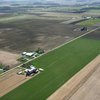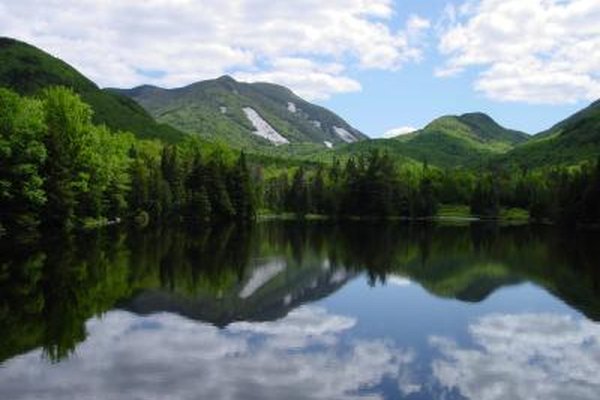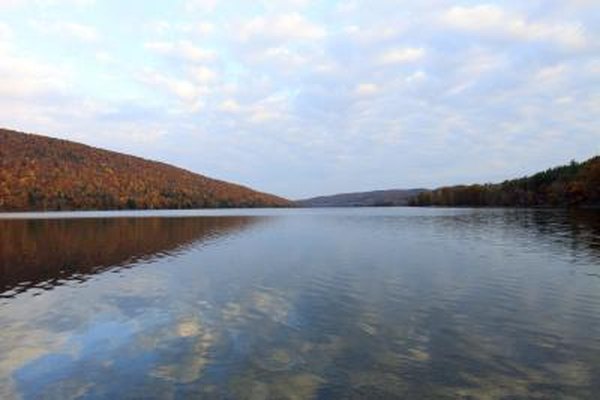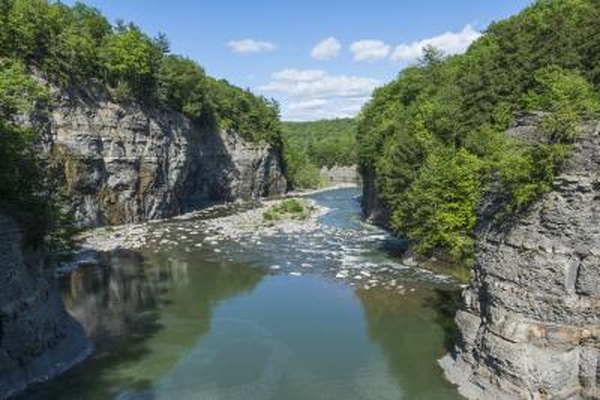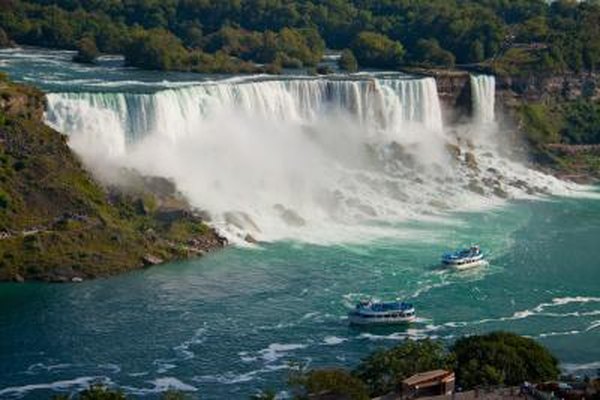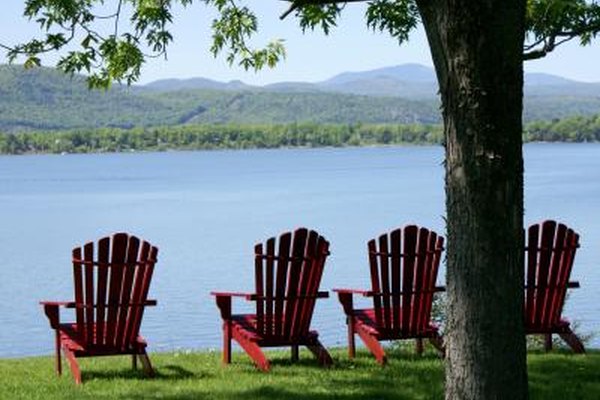New York has many notable landforms and bodies of water, including mountainous terrain, lakes and rivers. Several of these formations are part of large mountain or waterway systems that in some cases extend well beyond New York’s territory. Some of these naturally occurring formations also form a natural border between New York and another state; or form a part of the border between New York and the neighboring country of Canada.
Mountains
The largest, most significant New York landform is that of mountainous terrain. Subdivided into smaller mountain groupings, mountains of the vast Appalachian Mountain system cover large areas of New York, extending beyond New York State territory into Vermont, New Hampshire and southern Canada. In the southwestern portion of New York, you find mountains from the lower ranges of the Allegheny Plateau. In the eastern portion of the state, you find the Catskill and Adirondack mountain ranges. Located in the Adirondack range is the Ausable Chasm formation, informally known as the "Grand Canyon of the East" according to the Travellady website. Mount Marcy is the highest point in the state, as described at the Worldatlas website.
Lakes
New York has many notable lakes with Lake Champlain, which also borders the Ausable Chasm formation, perhaps the most well-known. The Finger Lakes region extends from the Pennsylvania border to the southern shore of Lake Ontario and covers 9,000 square miles of area. The Finger Lakes area incorporates 11 parallel lakes that, on a map or from the air, resemble a giant handprint as described at the Fingerlakes website. This region also encompasses Lake Ontario, one of the five great lakes, as well as the Erie Canal. Other important New York lakes include Lake Oneida and Lake George.
Rivers
The most important rivers within New York state include the Mohawk, the Hudson and the Genesee. An important state borderline river is the Delaware. The Hudson River has a 306-mile length. The Mohawk River drains into the Hudson. The Genesee drains into Lake Ontario (as also do the Black and Oswego rivers, all located in the western or central regions of the state). Another important river, as described at the Mapsofworld website is the Saint Lawrence river, part of an overall seaway that includes a total amount of almost 300 miles of frontage along Lake Erie and Lake Ontario.
Niagara
Perhaps the most well-known formation in New York is Niagara Falls. Niagara Falls is a series of three separate waterfall formations at the New York/Canadian border: Horseshoe Falls on the Canadian side is also known as Canada Falls; and on the United States side you will find American Falls and an adjacent, smaller waterfall, Bridal Veil Falls: as described at the Worldatlas website.
Natural Borders
Several of the landforms and water bodies you find in New York share the characteristic of acting as a natural border with another state or with Canada. Lake Champlain forms a natural border with Vermont, the Delaware River forms part of the southern border of New York with Pennsylvania, and the Saint Lawrence River and Niagara Falls each provide natural borders between New York and a portion of Canada.
Photo Credits
- franckreporter/iStock/Getty Images




